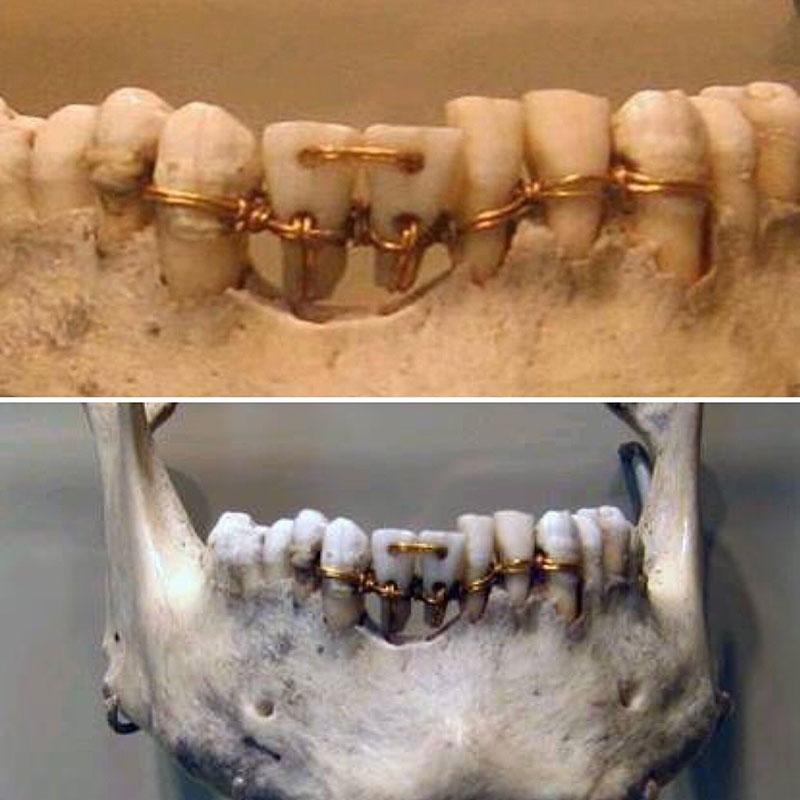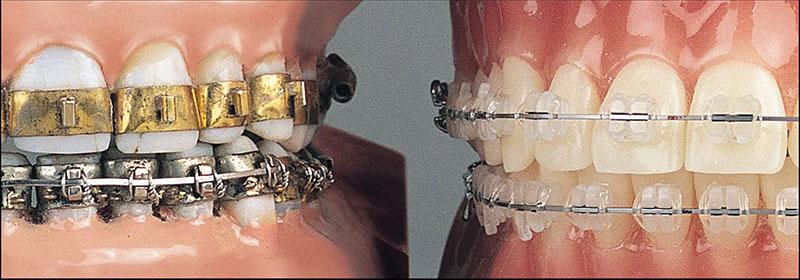Some of the very first braces ever made have been found on ancient Egyptian mummies, proof that straight teeth have been trending for thousands of years. They seem to have been crudely fashioned metal bands that were wrapped around teeth. Catgut (yes, literally made from the fibres of a cat’s intestines) was used like the modern orthodontic wire to close gaps in the teeth and mouth.
Archeologists have also found evidence of orthodontic procedures in ancient Greece. Thee Etruscans (an ancient Italian civilization) used mouth guards to protect the dead. These mouthguards prevented the wearers teeth from collapsing after a period of time. It seems straight teeth were valued in the afterlife too.

The ancient Romans, on the other hand, focused on straightening the teeth of the living. The first recorded attempt to straighten teeth was made by a Roman called Aulus Cornelius Celsus. Unfortunately, the tool he used was the force of his own hand by applying pressure at certain points. He did report success in his experiments but the veracity of his claims can’t be proved.
The Dark Ages (the period between the fall of the Roman Empire and the Renaissance) didn’t see much advancement in the field of orthodontics. This is probably because people were too busy dealing with problems like the plague and the Crusades to care. The next big leap would only come in the 1700s in France.
Two books were written on dentistry in the mid 1700s by Pierre Fauchard and Pierre Bourdet. Fauchard discovered a device he referred to as a ‘bandeu’. It was kind of like a mouthguard and was believed to help teeth stay in place. Bourdet was dentist to the King of France and he improved Fauchard’s bandeu in several ways. He also realized that wisdom teeth could be removed to avoid crowding (one of the most common causes of crooked teeth).
The word ‘braces’ started being widely used in the 1930s although the first modern braces were created in 1819 by yet another enterprising Frenchman called Christophe-Francois Delabarre. He placed a wire ‘crib’ directly over each set of two teeth. In 1843, Dr. Edward Maynard added elastics to improve jaw alignment. Three years later, EJ Tucker improved further on the existing model, making it slightly more comfortable for patients. The next major step was in 1864 when a man called Dr S.C. Barnum created the modern dental dam – dentists still use a version of it today. A dental dam is basically a thin piece of latex that fits around the teeth, protecting gums. Braces (until recently) were only made of metal and without the dental dam, they would have caused damage to the gums. They would have also caused you to cry from the excruciating pain – so say a silent thank you to Barnum.
The first ‘modern braces’ required wrapping wire around each tooth. The wire was tightened over time. If you think it sounds painful, you’re right. During the 20th century, dentists experimented with different materials – braces were made from ivory, zinc and gold.
Things changed in the 1970s. Breakthroughs included stainless steel and dental adhesive which made braces a lot less painful and a lot more effective. This was the true birth of modern braces.
As you can see, you picked the right time in history to wear braces. They are either subtle or stylish, they don’t really hurt and they work much faster than their predecessors. Modern technology continues to innovate and improve braces so make sure you talk to your orthodontist about different options. And keep smiling. You have a lot more reason to than the ancient Egyptians did.
